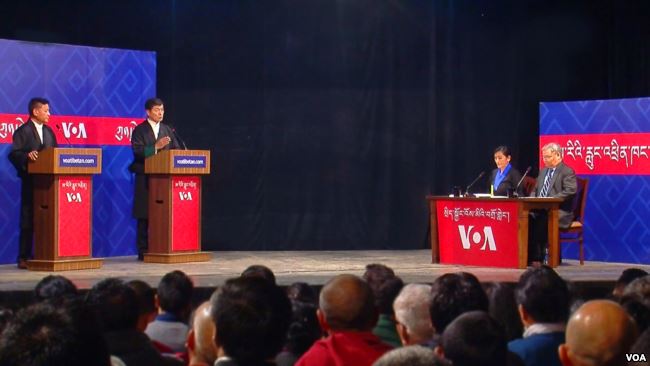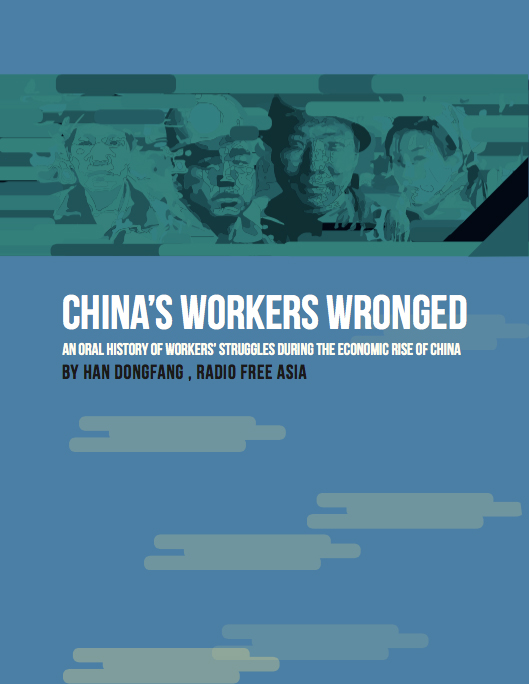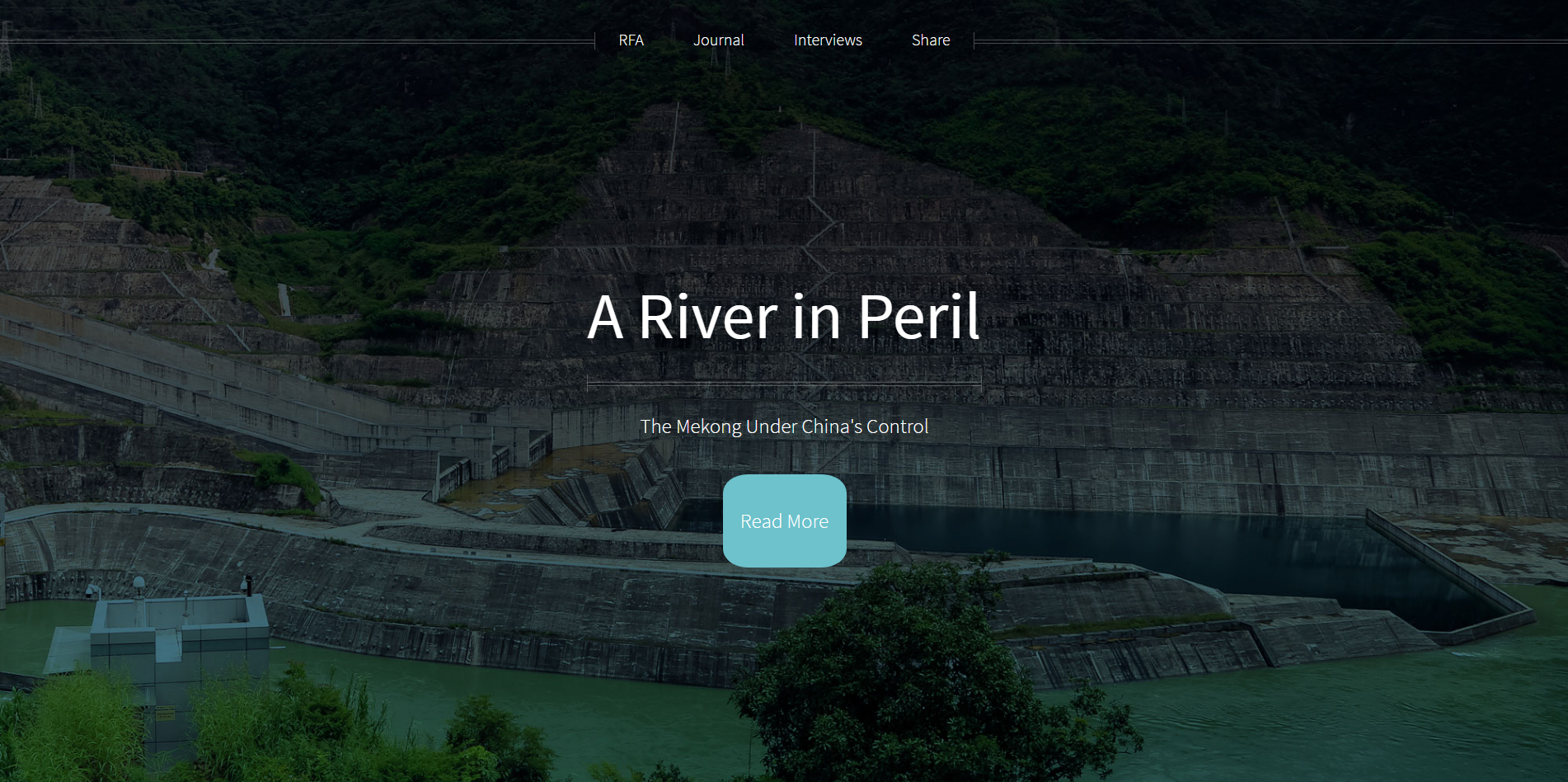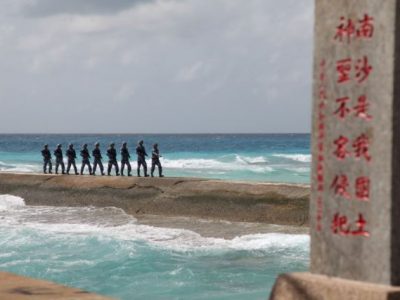Expanded TV offering
Radio Free Asia expanded its television programming in 2016, with the goal of improving the quality of programming and offering a greater variety of interesting topics covered within each program. Its Mandarin Service broadcasts a daily half-hour news show and a weekly half-hour show for satellite distribution into China, as well as a selection of short social media-styled videos for audiences on Facebook and YouTube.
VOA Mandarin Service launched a daily one-hour TV program, Eye on America, featuring news and analysis focused on the U.S. and its relations with China.
Interactive programming
VOA Mandarin Service produced more than 40 online, interactive lectures on China’s most popular social media platform, WeChat. The lectures covered American elections, the U.S. Constitution, labor movements, and U.S.-China relations. These lectures were conducted through the WeChat groups of the prestigious Peking University and Tsinghua University, and were simultaneously shared with more than 100 WeChat groups, each with 250–500 members.
VOA Mandarin Service also hosts an unbranded video channel on Youku (the Chinese equivalent of YouTube), featuring videos on American culture and society. The channel registered 3.3 million views in 2016, totaling over 15 million minutes of content viewing.
For the 50th anniversary of the Cultural Revolution, RFA’s Mandarin TV team produced an in-depth series on the historic events. The series included a televised discussion with young people inside China using WeChat. The youth, most of whom knew little or nothing about the Cultural Revolution, asked questions to experts located in RFA’s D.C. studio. One young man submitted his question from Tiananmen Square with the Mao portrait in the background.
China’s Workers Wronged
In September, RFA published an e-book (PDF, ePub) that highlights the struggles and challenges faced by China’s workers during the country’s dramatic economic rise. China’s Workers Wronged is based on 88 interviews with Chinese workers, the stories of whom are censored out of Chinese state media and underreported in Western media.
A River in Peril
In December, RFA launched a multimedia investigative web series examining the impact of China’s rapid development on the Mekong River and the communities downstream. A River in Peril: The Mekong Under China’s Control tells the story of Southeast Asia’s longest river, on which more than 60 million depend for their food, drinking water, and livelihoods.
Uncensored coverage
RFA and VOA were often the only sources reporting stories of activists and asylum seekers gone missing. RFA investigated the whereabouts of two Chinese asylum seekers who were missing after having been forcibly repatriated from Thailand in November 2015. After RFA had reported this story in May 2016, the Chinese authorities confirmed their detention in Chongqing days later.
In November, RFA reported on several prominent rights activists who had gone missing or were detained, including rights lawyer Jiang Tianyong; Liu Feiyue, founder of the Civil Rights and Livelihood Watch website and activist Xie Dan, who had planned to run as an independent candidate in upcoming local elections.
RFA and VOA are frequently cited or picked up by official Chinese media outlets, sometimes provoking responses. In April, VOA broadcast an interview with a Chinese manicurist who compared her experiences in the U.S. and China; the story was picked up by the popular Chinese Internet portal Sohu, generating over 80,000 engagements. The widely disseminated report prompted a reply in the official Party newspaper Global Times, which ran a commentary attacking the VOA interview.
In September, the People’s Daily, the party mouthpiece, ran a commentary criticizing the VOA for spreading the “American brand” of freedom and democracy. This attack is a clear indication that VOA threatens the Chinese government’s tight control of press freedom.
Tibet
In March, VOA Tibetan Service hosted a debate among top candidates for the position of Tibet’s political leader in exile (Sikyong, or prime minister). The exclusive prime-time event was broadcast on television, radio and the internet.
The debate was held in Dharamsala, India, where Tibet’s Central Administration in exile is based. Lobsang Sangay, the incumbent Sikyong, and Penpa Tsering, Speaker of the exile Tibetan Parliament, participated.

(L to R) Candidates Penpa Tsering and Lobsang Sangay with moderators Tenzin Sangmo and Namgyal Shastri.
In the fall, RFA Tibetan service reported that Chinese officials confiscated passports of Tibetans authorized to travel abroad while ordering other Tibetans to return home. Sources told RFA this action had been taken to reduce attendance at a ceremony to be conducted the next year in India by the Dalai Lama.
Uyghur
Throughout the year, RFA reported on the systemic persecution of ethnic minority Uyghurs by Chinese authorities in the Xinjiang Uyghur Autonomous Region. These include forced relocations, restrictions during the holy month of Ramadan and the destruction of thousands of mosques.
RFA Uyghur and Mandarin Services reported on a number of directives ordered by Chinese authorities in Xinjiang, meant to “boost loyalty to the Chinese Communist Party.” Under these new rules, residents, mostly ethnic minority Uyghurs, are required to attend a weekly patriotic flag-raising ceremony and sing the Chinese national anthem. A strict dress code, including no veils, is enforced during the ceremonies. A second notice, issued at the same time, ordered residents to notify the authorities of all planned naming ceremonies, marriages, deaths, and circumcisions of male children in advance. The government also issued a regional law making religious activities illegal for children, the parents of whom will be punished.
“I am a longtime listener of VOA. In the 1970s, I listened to VOA secretly as it was labeled ‘the enemy station.’ In the 1980s, I was able to record VOA radio programs on cassette tapes. Today I download your video programs.”
– VOA fan in China

South China Sea Project
In late 2016, Voice of America launched an ambitious interactive web project about the South China Sea. The project tells the story of how the area came to be dominated by China—in violation of international law—and explains clearly the complicated territorial disputes. The package uses sophisticated graphics and web development to condense decades of moves and countermoves by each of the six nations claiming ownership. The project also contains profiles of each claimant nation, including their assertions and economic interests, as well as their infrastructure and assets in the region. The slow accretion of territorial claims is revealed through interactive timelines, layered maps, and traditional reporting from VOA and RFA, providing one of the clearest explanations of one of the murkiest geopolitical disputes in modern times. The project is available in English, Mandarin, Cantonese, Indonesian, Khmer, Vietnamese and Lao.






